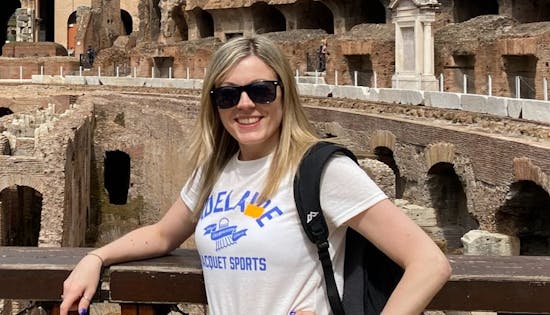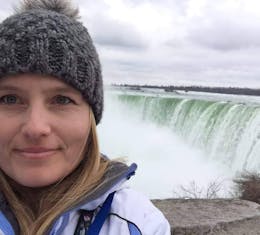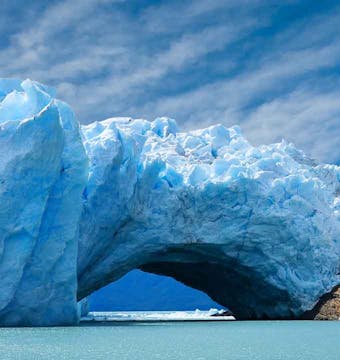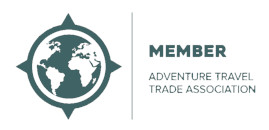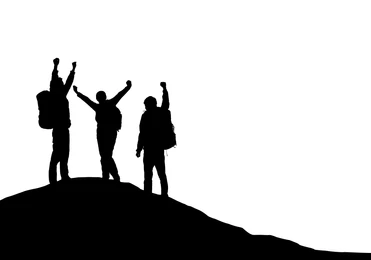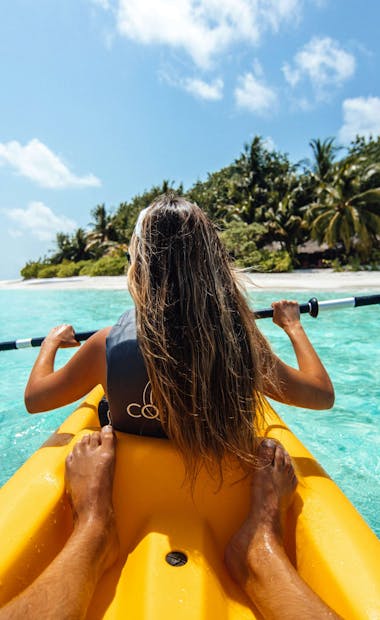Patagonia Tours
Explore the majestic flatlands and soaring mountains
Popular tours
- Save25%
 View Tour
View TourTorres del Paine - Full Circuit Trek - 11 Days
- Puerto Natales to Puerto Natales
- Age group: 12 - 100
- Max group size: 16
Was:£4,359From£3,253 - Save17%
 View Tour
View TourEnd of the Earth - 14 Days
- Buenos Aires to Buenos Aires
- Age group: 12 - 100
- Max group size: 16
Was:£4,099From£3,385 - Save30%
 View Tour
View TourPatagonia Hiking - 9 Days
- Buenos Aires to Buenos Aires
- Age group: 12 - 100
- Max group size: 16
Was:£2,829From£1,970 - Save31%
 View Tour
View TourPremium Patagonia - 9 Days
- Santiago to Ushuaia
- Age group: 15 - 99
- Max group size: 12
Was:£5,790From£4,012 - Save20%
 View Tour
View TourAdventures in Patagonia - 14 Days
- Buenos Aires to Buenos Aires
- Age group: 16 - 79
- Max group size: 16
Was:£5,065From£4,032 - Save12%
 View Tour
View TourJourneys: Discover Patagonia - 14 Days
- Buenos Aires to Buenos Aires
- Age group: 12 - 100
- Max group size: 16
Was:£5,699From£4,990
Patagonia Tours
Unveiling the Wonders of Patagonia: Embark on an Epic Journey
Welcome to Patagonia, a land of breathtaking beauty and awe-inspiring landscapes. Nestled at the southern tip of South America, Patagonia is a wild and untamed region that beckons adventurous souls and nature enthusiasts from around the globe. With its vast expanses of pristine wilderness, dramatic mountain ranges, turquoise glaciers, and abundant wildlife, Patagonia is a true paradise for those seeking unforgettable experiences in the great outdoors.
Discover Patagonia Tours and Holidays: A Gateway to Extraordinary Adventures
At The Adventure People, we invite you to embark on an extraordinary journey through Patagonia, where every step unveils a new wonder and every vista takes your breath away. Our carefully curated Patagonia tours and holidays offer a seamless blend of exploration, adventure, and cultural immersion, ensuring an unforgettable experience for travelers of all ages and interests.
Main Attractions: Nature's Masterpieces Unveiled
Prepare to be captivated by the extraordinary attractions that await you in Patagonia:
Torres del Paine National Park: Immerse yourself in the rugged beauty of this iconic national park, with its towering granite peaks, crystal-clear lakes, and sprawling glaciers. Explore the park's winding trails, encounter diverse wildlife such as guanacos and Andean condors, and witness the mesmerizing spectacle of the famous Torres del Paine mountains.
Perito Moreno Glacier: Stand in awe before the colossal Perito Moreno Glacier, one of the world's few advancing glaciers. Feel the thunderous crack and watch as ice chunks calve off into the turquoise waters below. Take a boat ride to witness this natural wonder up close or trek across the glacier for an exhilarating adventure.
Tierra del Fuego: Traverse the mythical landscapes of Tierra del Fuego, the "Land of Fire," where the rugged Andes meet the vastness of the Southern Ocean. Explore the charming city of Ushuaia, the southernmost city in the world, and embark on a cruise to witness the awe-inspiring beauty of Cape Horn and the Beagle Channel.
Los Glaciares National Park: Experience a true wilderness escape in Los Glaciares National Park, a UNESCO World Heritage site boasting shimmering lakes, towering peaks, and glaciers that seem to defy imagination. Marvel at the iconic Mount Fitz Roy and engage in thrilling outdoor activities like hiking, ice climbing, or sailing on the serene waters of Lake Argentino.
Why Visit Patagonia? A Symphony of Nature and Adventure
Patagonia offers a symphony of nature's most spectacular wonders, inviting you to become part of its enchanting tapestry. Here, you can disconnect from the chaos of modern life and reconnect with the raw power of the natural world. Be prepared to embark on unforgettable adventures, from hiking through untouched wilderness to kayaking past icebergs, from horseback riding across endless plains to observing the mesmerizing dance of whales in the pristine waters.
With its unrivaled beauty, Patagonia appeals to the adventurous spirit within us all. It is a destination that inspires, rejuvenates, and humbles, leaving an indelible mark on those fortunate enough to experience it. Discover the magic of Patagonia with [Travel Agency Name] and unlock the secrets of this extraordinary corner of the world.
Book Your Patagonia Tour or Holiday Today: Let the Adventure Begin
Are you ready to embark on an unforgettable journey through Patagonia? Browse our selection of Patagonia tours and holidays and choose the adventure that speaks to your soul. Our expert guides and personalized itineraries will ensure that your experience is tailored to your preferences, providing a seamless
When is the best time to visit Patagonia?
The best time to visit Patagonia largely depends on the specific experiences you are seeking and the activities you wish to engage in. Patagonia's weather can be unpredictable, and the region experiences distinct seasons. Here is a breakdown of the seasons in Patagonia to help you plan your visit:
Summer (December to February): Patagonian summer is the peak tourist season. During this time, temperatures are milder, ranging from 50°F (10°C) to 68°F (20°C) on average. The days are longer, allowing for more exploration and outdoor activities. It's an ideal time for hiking, camping, wildlife spotting, and visiting the iconic Torres del Paine National Park. However, keep in mind that popular attractions can be crowded, and it's advisable to book accommodations and tours in advance.
Fall (March to May): Fall in Patagonia offers beautiful landscapes adorned with golden hues. The weather starts to cool down, and temperatures range from 41°F (5°C) to 59°F (15°C) on average. It's a quieter time to visit, with fewer tourists and discounted rates on accommodations. Fall is a great season for hiking, photography, and enjoying the stunning autumnal colors. Wildlife is also active during this time as they prepare for the upcoming winter.
Winter (June to August): Winter in Patagonia brings colder temperatures, ranging from 28°F (-2°C) to 41°F (5°C) on average. Snow covers the mountains, creating a magical winter wonderland. It's an ideal time for winter sports enthusiasts, such as skiing, snowboarding, and snowshoeing. The landscapes take on a serene beauty, and you can experience the region's quieter side. However, some attractions and accommodations may have limited availability during this season, so plan ahead.
Spring (September to November): Spring in Patagonia is a transition period when nature starts to awaken. Temperatures range from 41°F (5°C) to 59°F (15°C) on average, and the days gradually become longer. Spring brings blooming wildflowers, melting snow, and vibrant green landscapes. It's a great time for photography, birdwatching, and exploring the region's diverse ecosystems. Like fall, spring offers fewer crowds and more affordable rates for accommodations.
It's important to note that weather conditions in Patagonia can be unpredictable, and it's advisable to pack layers, including warm clothing, regardless of the season. The region is known for its strong winds, so windproof and waterproof outerwear is essential.
Consider your interests, preferred weather conditions, and desired level of tourist activity when planning your visit to Patagonia. Whether you choose to embrace the summer buzz or seek solitude in the quieter seasons, Patagonia's natural beauty will captivate you year-round.
Will I need a visa to travel to Patagonia?
Travelers visiting Patagonia will need to consider the visa requirements for the specific countries within Patagonia they plan to visit. Patagonia spans both Argentina and Chile, so the visa requirements will vary depending on your nationality and the country you are entering.
Argentina: Many nationalities, including the United States, Canada, and most European countries, do not need a visa to enter Argentina for tourism purposes. They are granted a tourist visa upon arrival, which allows stays of up to 90 days. However, it's always recommended to check the visa requirements based on your nationality before traveling. Ensure that your passport is valid for at least six months beyond your planned departure date from Argentina.
Chile: Similarly, many nationalities can enter Chile without a visa for tourism purposes. Visitors from the United States, Canada, Australia, and most European countries are granted a tourist visa upon arrival, valid for up to 90 days. Again, check the visa requirements based on your nationality and ensure your passport is valid for at least six months beyond your planned departure date from Chile.
It's important to note that visa policies can change, so it's advisable to consult the official websites of the consulates or embassies of Argentina and Chile or contact your local embassy for the most up-to-date information regarding visa requirements.
If you plan to travel beyond Argentina and Chile, such as to other countries in South America, make sure to check the visa requirements for those specific countries as well.
It's always wise to ensure that you have a valid passport with sufficient validity and that you comply with the visa regulations before traveling to Patagonia.
What are the must see destinations in Patagonia?
Patagonia is a land of remarkable beauty, offering a multitude of must-see destinations that will leave you in awe. Here are some of the top attractions in Patagonia that you shouldn't miss:
Torres del Paine National Park, Chile: This iconic national park is a nature lover's paradise, featuring the majestic Torres del Paine mountains, crystalline lakes, glaciers, and vast expanses of untouched wilderness. Explore the park's extensive network of trails, witness the stunning Grey Glacier, and be mesmerized by the dramatic landscapes that have made this park famous worldwide.
Perito Moreno Glacier, Argentina: Located in Los Glaciares National Park, the Perito Moreno Glacier is a true natural wonder. Witness its immense size and the breathtaking sight of ice calving into the turquoise waters below. Take a boat tour or even hike on the glacier for an unforgettable experience.
El Chaltén, Argentina: Known as the "Trekking Capital of Argentina," El Chaltén is a small town nestled amidst the Andes mountains. It serves as a gateway to numerous hiking trails, including the famous Fitz Roy and Cerro Torre. Enjoy spectacular vistas, pristine lakes, and the sheer beauty of Patagonian nature.
Tierra del Fuego National Park, Argentina: Situated at the southernmost tip of South America, Tierra del Fuego National Park offers a unique blend of mountains, forests, and coastal landscapes. Discover its rugged beauty by hiking through scenic trails, canoeing along picturesque rivers, or taking a boat ride to explore the Beagle Channel.
Ushuaia, Argentina: Known as the "End of the World," Ushuaia is the southernmost city in the world. It serves as a gateway to Antarctica and offers a variety of outdoor activities. Explore the city's charming streets, visit the Museo Marítimo (Maritime Museum), or embark on a boat tour to see penguins and sea lions.
El Calafate, Argentina: Located near the southern shores of Lake Argentino, El Calafate is a popular base for exploring the region's glaciers, including Perito Moreno. Take a boat tour to witness the Upsala and Spegazzini Glaciers or hike in the nearby Glaciers National Park.
Puerto Natales, Chile: This quaint town in Chilean Patagonia is the perfect starting point for visiting Torres del Paine National Park. Enjoy the local charm, visit the Museo Histórico, and indulge in delicious Patagonian cuisine before embarking on your wilderness adventure.
Punta Arenas, Chile: The gateway to southern Patagonia, Punta Arenas is a vibrant city with a rich history and unique culture. Explore its colorful architecture, visit historical sites like Plaza Muñoz Gamero, and take a boat trip to see the nearby Magdalena Island, home to a large colony of Magellanic penguins.
These are just a few highlights of the many incredible destinations in Patagonia. Each offers its own unique charm, natural wonders, and opportunities for adventure. Whether you're a hiker, nature enthusiast, or simply seeking awe-inspiring landscapes, Patagonia will not disappoint with its unmatched beauty and pristine wilderness.
What is the local currency in Patagonia, and can I use credit cards?
Patagonia encompasses both the Argentine and Chilean regions, each having its own local currency:
Argentina: The local currency in the Argentine region of Patagonia is the Argentine Peso (ARS). It is recommended to carry some cash in pesos for smaller establishments, local markets, or places that may not accept credit cards.
Chile: In the Chilean region of Patagonia, the local currency is the Chilean Peso (CLP). Cash is widely accepted throughout Chile, including Patagonia, but credit cards are also commonly used.
Credit cards, such as Visa and Mastercard, are widely accepted in most tourist areas, hotels, restaurants, and larger stores in both the Argentine and Chilean regions of Patagonia. However, it's always a good idea to carry some cash for smaller establishments or remote areas where card acceptance may be limited.
It's advisable to notify your bank or credit card company about your travel plans to Patagonia before your departure. This will help avoid any potential issues with your cards being blocked due to suspected fraudulent activity when used in a different country.
For exchanging currency, you can find currency exchange offices (cambios) in major towns and cities, as well as ATMs that accept international cards. It's recommended to compare exchange rates and fees to get the best value for your money.
Remember to keep your cash and cards secure during your travels and consider using a money belt or a secure travel wallet to protect your belongings.
Note: Currency exchange rates can fluctuate, so it's advisable to check the rates closer to your travel dates and consider obtaining some local currency before your arrival for convenience.
What are the famous treks of Patagonia?
Patagonia is renowned for its breathtaking landscapes and offers several famous treks that attract outdoor enthusiasts from around the world. Here are some of the most renowned treks in Patagonia:
Torres del Paine "W" Trek (Chile): This is one of the most iconic treks in Patagonia, taking you through the stunning Torres del Paine National Park. The "W" Trek spans approximately 50 miles (80 kilometers) and offers incredible views of the granite towers, glacial lakes, and rugged landscapes. It typically takes around 4 to 5 days to complete the full circuit, with options for shorter hikes.
Torres del Paine Circuit (Chile): For more experienced hikers seeking a greater challenge, the Torres del Paine Circuit is an extended version of the "W" Trek. This circuit encompasses the full loop around the park and takes around 8 to 10 days to complete. It provides an immersive experience in the remote wilderness of Patagonia.
Fitz Roy Trek (Argentina): Located in Los Glaciares National Park, the Fitz Roy Trek offers stunning views of the iconic Mount Fitz Roy and Cerro Torre. The trek starts from the town of El Chaltén and takes you through forests, glaciers, and pristine valleys. The classic hike to Laguna de los Tres offers an incredible vantage point to admire the towering peaks.
O Circuit (Argentina): Similar to the Torres del Paine Circuit in Chile, the O Circuit in Los Glaciares National Park offers an extended trekking experience in Argentina. The route encircles the impressive granite peaks of Mount Fitz Roy and Cerro Torre, taking you through diverse landscapes, including glaciers, beech forests, and turquoise lakes.
Dientes de Navarino (Chile): Considered one of the most challenging treks in the region, the Dientes de Navarino trek is located on Navarino Island in Tierra del Fuego. It offers a remote and rugged experience, with stunning views of the Beagle Channel, mountain passes, and the distinctive jagged peaks known as the "Teeth of Navarino."
El Chaltén to El Calafate (Argentina): This trek connects the towns of El Chaltén and El Calafate, allowing you to explore the beautiful landscapes of Los Glaciares National Park on foot. The trail takes you through scenic valleys, past glaciers, and along the shores of Lake Viedma, providing a diverse and rewarding hiking experience.
These are just a few of the famous treks in Patagonia, known for their awe-inspiring vistas, challenging terrain, and the opportunity to immerse yourself in the untouched wilderness. It's important to plan and prepare for these treks, considering factors such as weather conditions, camping equipment, and physical fitness. It's advisable to obtain the necessary permits, carry essential supplies, and be well-informed about the trails before embarking on these adventures.
How fit do I need to be for the treks in Patagonia?
The level of fitness required for treks in Patagonia can vary depending on the specific trail and the duration of the trek. While some treks are more challenging and require a higher level of fitness, there are also options available for different fitness levels. Here are some considerations:
Moderate Fitness Level: Many of the popular treks in Patagonia, such as the "W" Trek in Torres del Paine or the Fitz Roy Trek in Los Glaciares National Park, can be completed by individuals with a moderate level of fitness. These treks involve hiking on well-defined trails with some ascents and descents. Regular exercise, such as walking, hiking, or cardiovascular workouts, can help prepare you for these treks. It's recommended to start training and building up your endurance before your trip.
Advanced Fitness Level: For longer and more challenging treks like the Torres del Paine Circuit or the Dientes de Navarino, a higher level of fitness is required. These treks involve more strenuous terrain, longer distances, and multiple days of hiking. It's advisable to have prior hiking experience and be comfortable with carrying a backpack for extended periods. Regular cardio workouts, strength training, and endurance-building exercises will be beneficial in preparing for these treks.
Altitude Considerations: Some treks in Patagonia, particularly in the northern regions of Argentina, may involve higher altitudes. If you plan to trek in areas with significant altitude gain, such as the Laguna de los Tres in El Chaltén, it's important to acclimatize properly and be aware of the potential effects of altitude on your fitness and overall well-being. Consult with a healthcare professional if you have any concerns about altitude sickness.
Regardless of the trek you choose, it's essential to listen to your body, pace yourself, and take breaks as needed. It's also advisable to start preparing and training well in advance of your trip to build up your stamina and endurance.
It's worth noting that weather conditions in Patagonia can be unpredictable and can impact the difficulty of the trek. Be prepared for varying weather conditions, including strong winds, rain, and cold temperatures, especially if you are trekking during the shoulder seasons.
If you have any specific health concerns or physical limitations, it's recommended to consult with a healthcare professional before embarking on a trek in Patagonia. They can provide personalized advice based on your individual circumstances.
Remember, trekking in Patagonia can be physically demanding, but the stunning landscapes and rewarding experiences make it all worthwhile. Choose a trek that matches your fitness level, be prepared, and enjoy the adventure!
Is Patagonia a good destination for solo travellers?
Absolutely! Patagonia can be a fantastic destination for solo travelers, offering a wealth of experiences and opportunities for exploration. Here are some reasons why Patagonia is well-suited for solo travel:
Safe Destination: Patagonia is generally considered a safe region for travelers, with low crime rates and friendly locals. While it's always important to take necessary precautions as a solo traveler, you can feel relatively secure exploring the region.
Solo-Friendly Activities: Patagonia is a paradise for outdoor enthusiasts, and many of the activities and attractions are well-suited for solo travelers. Whether you enjoy hiking, trekking, photography, wildlife spotting, or simply immersing yourself in nature, Patagonia offers ample opportunities to pursue your interests independently.
Meeting Other Travelers: Patagonia is a popular destination for adventurers from around the world. You're likely to encounter fellow solo travelers along the way, providing opportunities to make new friends and share experiences. Hostels, campsites, and guided tours are common gathering places where you can connect with like-minded travelers.
Flexibility and Independence: Traveling solo allows you the freedom to create your own itinerary and set your own pace. You can choose the activities that interest you most, spend as much time as you like in certain places, and adapt your plans according to your preferences and mood.
Stunning Natural Landscapes: Patagonia's breathtaking landscapes are a sight to behold. The immense mountains, pristine lakes, sprawling glaciers, and expansive plains create a sense of awe and solitude. As a solo traveler, you can fully immerse yourself in these surroundings, appreciating the beauty and serenity of the region.
Self-Discovery and Personal Growth: Solo travel often provides an opportunity for self-reflection, personal growth, and stepping out of your comfort zone. Patagonia's vast wilderness and challenging treks can push you to discover new strengths, test your limits, and gain a deeper sense of self-confidence and independence.
It's important to plan your solo trip to Patagonia carefully, considering factors such as weather conditions, navigation, and safety guidelines. Inform someone about your travel plans, carry essential supplies, and stay informed about any specific precautions for the areas you plan to visit.
Remember, solo travel in Patagonia can be an incredibly rewarding experience, allowing you to connect with nature, meet fellow travelers, and create lifelong memories.
Is Patagonia a safe destination?
Patagonia is generally considered a safe destination for travelers. However, as with any travel destination, it's important to take certain precautions and be aware of potential risks. Here are some considerations regarding safety in Patagonia:
Low Crime Rate: Patagonia has a relatively low crime rate compared to many other regions. Violent crimes are uncommon, and the majority of visitors have safe and enjoyable experiences. However, it's always wise to exercise caution and be aware of your surroundings, especially in crowded tourist areas or urban centers.
Natural Hazards: Patagonia's rugged landscapes and changeable weather conditions can present certain risks. It's essential to stay informed about current weather forecasts, be prepared for sudden changes in climate, and follow the guidance of local authorities or tour operators. Familiarize yourself with safety procedures for outdoor activities and heed any warnings or restrictions.
Road Safety: If you plan to drive or rent a vehicle in Patagonia, it's important to be cautious on the roads. Some roads can be winding, narrow, and unpaved, requiring extra attention and defensive driving. Adhere to traffic rules and regulations, and consider the option of hiring a local driver or joining organized tours for remote areas.
Wildlife Encounters: Patagonia is known for its diverse wildlife, including guanacos, pumas, and condors. While encounters with wildlife are part of the region's allure, it's crucial to maintain a safe distance and respect their natural habitat. Observe wildlife from a distance, follow guidelines provided by national parks or reserves, and avoid feeding or approaching animals.
Personal Safety: Take general precautions to ensure your personal safety while traveling in Patagonia. Keep a close eye on your belongings, use hotel safes for valuables, and avoid displaying excessive wealth. It's advisable to have copies of important documents like passports and to keep them secure. If you're traveling alone, inform someone about your travel plans and stay connected with family or friends.
Local Advice and Guidance: Stay informed about local conditions and seek advice from reliable sources, such as local authorities, tourism offices, or reputable tour operators. They can provide valuable information about potential risks, safety guidelines, and any specific precautions to consider based on your destination and planned activities.
While Patagonia is generally safe, it's important to exercise common sense and take necessary precautions to ensure your personal safety and well-being. By staying informed, respecting local customs and regulations, and being aware of your surroundings, you can have a safe and enjoyable experience exploring the natural wonders of Patagonia.
Will I require any vaccinations to travel to Patagonia?
Before traveling to Patagonia or any destination, it's important to consult with a healthcare professional or a travel medicine specialist to get the most accurate and up-to-date information regarding required vaccinations. However, here are some common vaccinations that are typically recommended for travelers to Patagonia:
Routine Vaccinations: Ensure that your routine vaccinations, such as measles-mumps-rubella (MMR), diphtheria-tetanus-pertussis, varicella (chickenpox), polio, and influenza, are up to date. These vaccines are important regardless of your travel destination.
Hepatitis A: Hepatitis A is a viral infection that can be transmitted through contaminated food or water. It's recommended for most travelers to Patagonia, as there may be opportunities for exposure to contaminated food or water sources.
Typhoid: Typhoid fever is another bacterial infection transmitted through contaminated food and water. It is recommended for travelers who may be visiting areas with poor sanitation or where food and water safety standards may be questionable.
Hepatitis B: Hepatitis B is a viral infection transmitted through blood and body fluids. It is recommended for travelers who may have close contact with local populations, plan to stay for an extended period, or engage in activities that may involve exposure to blood or bodily fluids.
Rabies: While the risk of rabies is relatively low in Patagonia, it may be recommended for travelers engaging in outdoor activities, such as hiking or wildlife encounters, where there is a higher chance of exposure to animals.
Please note that these are general recommendations, and specific vaccination requirements may vary depending on your individual health, travel plans, and duration of stay. It's best to consult with a healthcare professional or travel medicine specialist who can assess your personal situation and provide personalized advice.
Additionally, it's important to follow good hygiene practices, drink safe water, and take precautions to prevent insect bites during your trip. This may include using insect repellent, wearing protective clothing, and staying in accommodations with proper sanitation facilities.
Remember to plan ahead and schedule your vaccinations well in advance of your trip, as some vaccines may require multiple doses or take time to become effective.
How does the rooming work on tours?
Small group tours in Patagonia typically involve a set itinerary where you travel with a group of fellow travellers and a tour leader/guide. Accommodation arrangements vary depending on the specific tour you choose. Here are some common aspects of rooming arrangements on small group tours:
Shared Rooms: In order to promote camaraderie and facilitate interaction among group members, most tours arrange shared accommodation. This means you will be paired with another member of the same gender from the group to share a room. Roommates may sometimes change periodically throughout the tour.
Single Supplement: If you prefer to have your own room and privacy, you may have the option to pay a single supplement fee. This additional fee allows you to have your own room for the duration of the tour. However, please note that single supplements can vary in cost and availability.
Roommate Matching: Tour operators usually offer roommate matching services, where they try to pair you with a suitable roommate based on your preferences, such as age range. This can help ensure compatibility and a more enjoyable experience for all participants.
Rooming Preferences: When booking your small group tour, it's important to communicate your rooming preferences to the tour operator. If you have specific requirements or preferences, such as sharing with a friend or a specific roommate request, it's advisable to inform the tour operator during the booking process.
It's important to carefully read the tour details and inclusions provided by the tour operator to understand their specific rooming policies. If having your own room is a priority, make sure to inquire about the availability of single supplements and any associated costs before booking your tour.
Keep in mind that while sharing a room with a fellow traveller can be a great way to meet new people and build connections, having your own room provides more privacy and flexibility. Consider your preferences and the dynamics of the tour when deciding whether to opt for a shared room or pay for a single supplement.
Remember to communicate your needs and preferences clearly with the tour operator during the booking process to ensure a comfortable and enjoyable accommodation experience on your small group tour in Patagonia.
What is the food like in Patagonia?
The food in Patagonia offers a unique culinary experience that reflects the region's diverse landscapes and cultural influences. Here's a glimpse into the flavors and dishes you can expect to encounter in Patagonia:
Grilled Meats: Asado, the traditional Argentine barbecue, is a highlight of the Patagonian culinary scene. You'll find succulent cuts of beef, lamb, and pork cooked over an open flame or charcoal, resulting in tender and flavorful meats. Patagonia is known for its high-quality, grass-fed livestock, which contributes to the exceptional taste.
Lamb: Patagonia is particularly renowned for its tender and flavorful lamb dishes. The region's vast grasslands provide ideal grazing conditions for sheep, resulting in high-quality meat. Traditional lamb dishes, such as cordero al palo (lamb cooked on a spit) or cordero patagónico (Patagonian-style lamb), are must-try delicacies.
Seafood: With its long coastline and proximity to the Southern Ocean, Patagonia boasts an abundance of fresh seafood. Delight in dishes like centolla (king crab), merluza negra (Patagonian toothfish), and various species of trout. Coastal towns like Puerto Madryn and Puerto Natales offer excellent seafood options.
Empanadas: These savory pastries are popular throughout Argentina and Chile, including Patagonia. Empanadas are typically filled with a variety of ingredients such as beef, chicken, cheese, or vegetables. They make for a delicious snack or meal on the go.
Mate: Mate is a traditional South American herbal tea and a significant part of the social and cultural fabric of Patagonia. It is made by steeping dried leaves of the yerba mate plant in hot water and consumed through a metal straw called a bombilla. Sharing mate with locals can offer a unique cultural experience.
Regional Specialties: Patagonia has some unique regional dishes worth trying. In Argentina, you might encounter specialties like locro (a hearty stew made with corn, beans, and meat), chivito (a sandwich with grilled meat, cheese, and toppings), or cordero al disco (lamb cooked in a shallow metal pan). In Chile, don't miss out on curanto (a traditional feast with various meats, seafood, and potatoes cooked in a pit).
Wine: Patagonia is also emerging as a notable wine region, known for its cool climate and production of excellent Pinot Noir and Malbec wines. Enjoy a glass of local wine to complement your meals and savor the flavors of the region.
When dining out in Patagonia, you'll find a range of establishments catering to different budgets and tastes, from casual local eateries to gourmet restaurants. Don't forget to try some of the region's delectable desserts, such as dulce de leche-based treats or traditional Argentine pastries like medialunas (croissants).
Overall, the food in Patagonia combines fresh ingredients, traditional cooking techniques, and a rich culinary heritage, offering a delightful gastronomic journey for visitors to savor.
Can I drink the tap water in Patagonia?
While the tap water in some parts of Patagonia may be considered safe to drink, it's generally recommended for travelers to exercise caution and opt for bottled or purified water to avoid any potential health issues. Here are some considerations regarding drinking water in Patagonia:
Tap Water Variations: The quality of tap water can vary across different regions and even within different areas of Patagonia. In larger cities like Bariloche and Ushuaia, the tap water is typically treated and considered safe to drink. However, it's advisable to confirm with locals or your accommodation provider about the specific water quality in the area you're visiting.
Remote Areas and Rural Communities: In more remote areas or rural communities of Patagonia, the water supply may come from natural sources or wells, and the quality may not meet the same standards as in urban areas. In such cases, it's recommended to avoid drinking tap water and rely on bottled water or other purified water sources.
Bottled Water: Bottled water is readily available in most tourist destinations, hotels, and supermarkets throughout Patagonia. It's a convenient and reliable option for staying hydrated and ensuring safe drinking water during your travels. Look for sealed bottles from trusted brands to ensure quality.
Water Purification: If you prefer to reduce plastic waste or find yourself in an area with limited access to bottled water, you can consider purifying tap water using methods such as boiling, using water purifying tablets, or using portable water filters. These methods can help eliminate or reduce harmful bacteria and pathogens.
Ice and Beverages: When ordering beverages or drinks that contain ice, such as cocktails or cold beverages, it's advisable to inquire about the water source used to make the ice. If the ice is made from tap water, it's safer to opt for drinks without ice or specifically request drinks made with purified or bottled water.
It's important to note that individual sensitivities to water quality may vary, and some travelers may be more susceptible to stomach issues. If you have a sensitive stomach or are unsure about the water quality in a particular area, it's generally safer to err on the side of caution and stick to bottled water.
In addition to drinking water, consider using bottled or purified water for activities like brushing your teeth and washing fruits and vegetables. Remember to also maintain good hygiene practices, such as washing your hands with soap or using hand sanitizer before meals.
By being cautious about drinking water in Patagonia, you can help prevent any potential stomach discomfort and enjoy a healthy and pleasant journey.
Are there any cultural norms in Patagonia I should follow?
When visiting Patagonia, it's important to be mindful of the local cultural norms and customs to show respect and enhance your overall experience. Here are some cultural norms to keep in mind:
Greeting and Personal Space: Patagonians generally greet each other with a handshake, and close friends and family may exchange kisses on the cheek. It's polite to maintain a comfortable personal space and respect others' boundaries.
Punctuality: Patagonians typically value punctuality, so it's best to arrive on time for meetings, tours, or social gatherings. Being punctual shows respect for others' time and demonstrates your commitment to the event.
Respect for Nature: Patagonia is renowned for its pristine natural landscapes, and preserving the environment is a fundamental value. It's important to respect nature by avoiding littering, staying on designated trails, and following the guidelines provided by national parks or protected areas.
Conservative Dress: Patagonia tends to have a more relaxed and casual dress code. However, when visiting religious sites, formal establishments, or participating in traditional events, it's appropriate to dress modestly and avoid wearing revealing clothing.
Meal Etiquette: When invited to someone's home for a meal, it's customary to bring a small gift for the host, such as a bottle of wine or a dessert. During meals, it's polite to wait for the host to begin eating before you start. If offered mate, the traditional herbal tea, it's a gesture of hospitality to accept and participate in the ritual.
Language: The official language of Patagonia varies between Spanish and English depending on the region. In Argentina, Spanish is spoken, while in parts of Chile, English may be more prevalent. Learning a few basic Spanish phrases can greatly enhance your interactions with locals and demonstrate your interest in the culture.
Tipping: Tipping practices in Patagonia are similar to those in other parts of Argentina and Chile. In restaurants, it's customary to leave a tip of around 10% of the bill if the service was satisfactory. In hotels, you can tip hotel staff for exceptional service, such as bellhops or housekeeping.
Photography: When taking photos of people, especially locals, it's polite to ask for permission first. Some individuals may prefer not to be photographed, so it's important to respect their wishes. In certain sacred or religious sites, photography may be restricted, so always check for any signage or guidelines.
Cultural Sensitivity: It's essential to approach the local culture with an open mind and respect for diversity. Patagonia is home to indigenous communities, and it's important to be culturally sensitive and avoid any behavior or language that could be considered disrespectful or offensive.
By being mindful of these cultural norms, you can engage with the local community, build connections, and foster a positive cultural exchange during your time in Patagonia. Remember, embracing the local customs can enhance your travel experience and create lasting memories.
What should I pack for a trip to Patagonia?
When packing for a trip to Patagonia, it's essential to be prepared for the region's diverse climate and outdoor activities. Here's a comprehensive packing list to ensure you have everything you need:
Clothing:
- Layered clothing: Pack lightweight, moisture-wicking base layers, thermal or fleece mid-layers, and a waterproof and windproof outer shell.
- Insulated jacket: A warm, insulated jacket or down coat is crucial for colder temperatures, especially in winter or at higher altitudes.
- Waterproof pants: These will keep you dry during rainy or snowy conditions and protect against strong winds.
- Hiking pants or convertible trousers: Opt for comfortable and durable pants suitable for outdoor activities.
- Long-sleeved shirts: Pack a mix of breathable, quick-drying shirts for layering or sun protection.
- T-shirts: Bring a few comfortable shirts for everyday wear.
- Warm hat, gloves, and scarf: Protect yourself from cold temperatures and wind chill.
- Sturdy, waterproof hiking boots: Choose boots with good ankle support and a grippy sole for traction on different terrains.
- Socks: Pack a combination of moisture-wicking and warm socks suitable for hiking.
Outdoor Gear:
- Daypack: A lightweight, waterproof daypack to carry your essentials during hikes or day trips.
- Hiking poles: Optional but recommended for added stability and support during long hikes or challenging terrain.
- Binoculars: Enhance your wildlife and scenic viewing experiences.
- Sunglasses and sun hat: Protect your eyes and face from the sun's strong rays.
Travel Essentials:
- Passport and travel documents: Ensure you have a valid passport and any necessary visas or permits.
- Travel adapter: Patagonia uses Type C or Type L electrical outlets, so bring a suitable adapter if needed.
- Cash and credit cards: Carry some local currency (Argentine Peso or Chilean Peso) for smaller establishments, and have a credit card for larger transactions.
- Travel insurance: It's highly recommended to have travel insurance that covers medical expenses and trip cancellations.
Personal Items:
- Toiletries: Pack travel-sized toiletries, including toothbrush, toothpaste, sunscreen, insect repellent, and any necessary medications.
- First aid kit: Include basic medical supplies such as bandages, pain relievers, antihistamines, and any prescription medications.
- Personal hygiene items: Bring items like wet wipes, hand sanitizer, and a travel towel.
- Camera and accessories: Capture the stunning landscapes and wildlife with your camera and don't forget spare batteries, memory cards, and a protective case.
Miscellaneous:
- Water bottle: Stay hydrated by carrying a reusable water bottle.
- Snacks: Pack energy bars or trail mix for quick and convenient snacks during outdoor activities.
- Travel guide or maps: Carry a guidebook or maps to navigate the region and learn about local attractions.
- Portable charger: Keep your electronics powered up during long days of exploration.
Remember to check the weather forecast for your specific travel dates and destinations in Patagonia to ensure you pack accordingly. Layering is key to adapt to changing temperatures, and clothing that dries quickly is beneficial in case of rain or snow. Additionally, pack your belongings in a waterproof or water-resistant bag to protect them from the elements.
By being well-prepared and packing appropriately, you'll be ready to fully enjoy the breathtaking landscapes and adventurous activities that Patagonia has to offer.
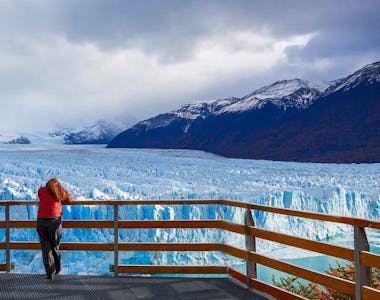
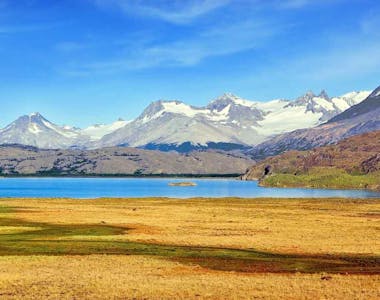
Patagonia Highlights
Book With Confidence
Monthly Payments
Spread the costs with no interest or additional fees
Best Price Guarantee
We won't be beaten on price. If you find this adventure at a lower price please get in touch!
Reserve now & pay later
Reserve your adventure today and pay later, free of charge
ATOL protected
Book with confidence
Hold your space today, for free
or book your trip with a deposit and then pay the rest in instalments.
Reserve your flights with us
Add flights to your booking and we'll take care of the rest. You'll get 24/7 support from our team & ATOL protection.
Speak to our experts
Call or email our expert team to find out more and help with ideas and planning.
